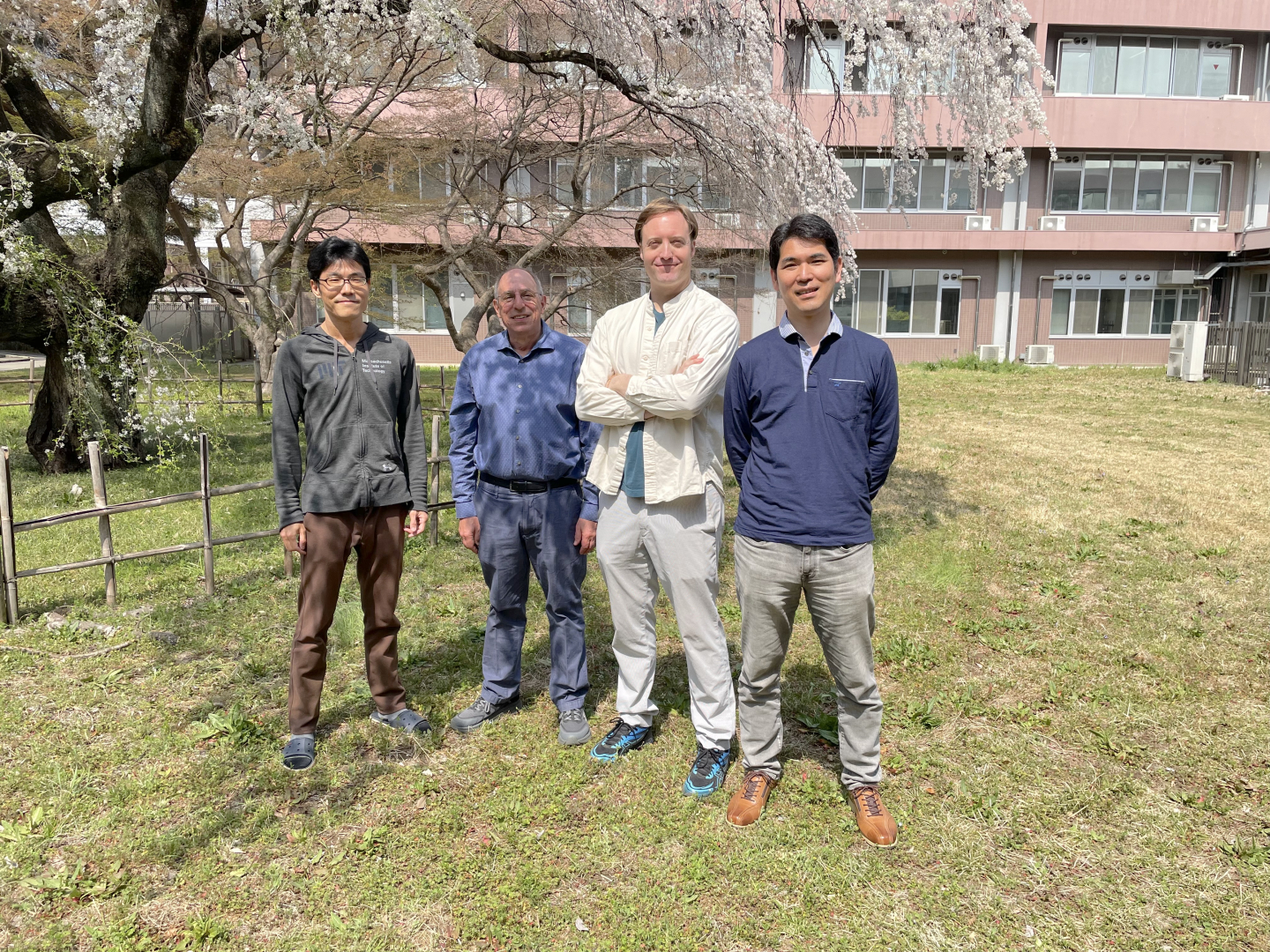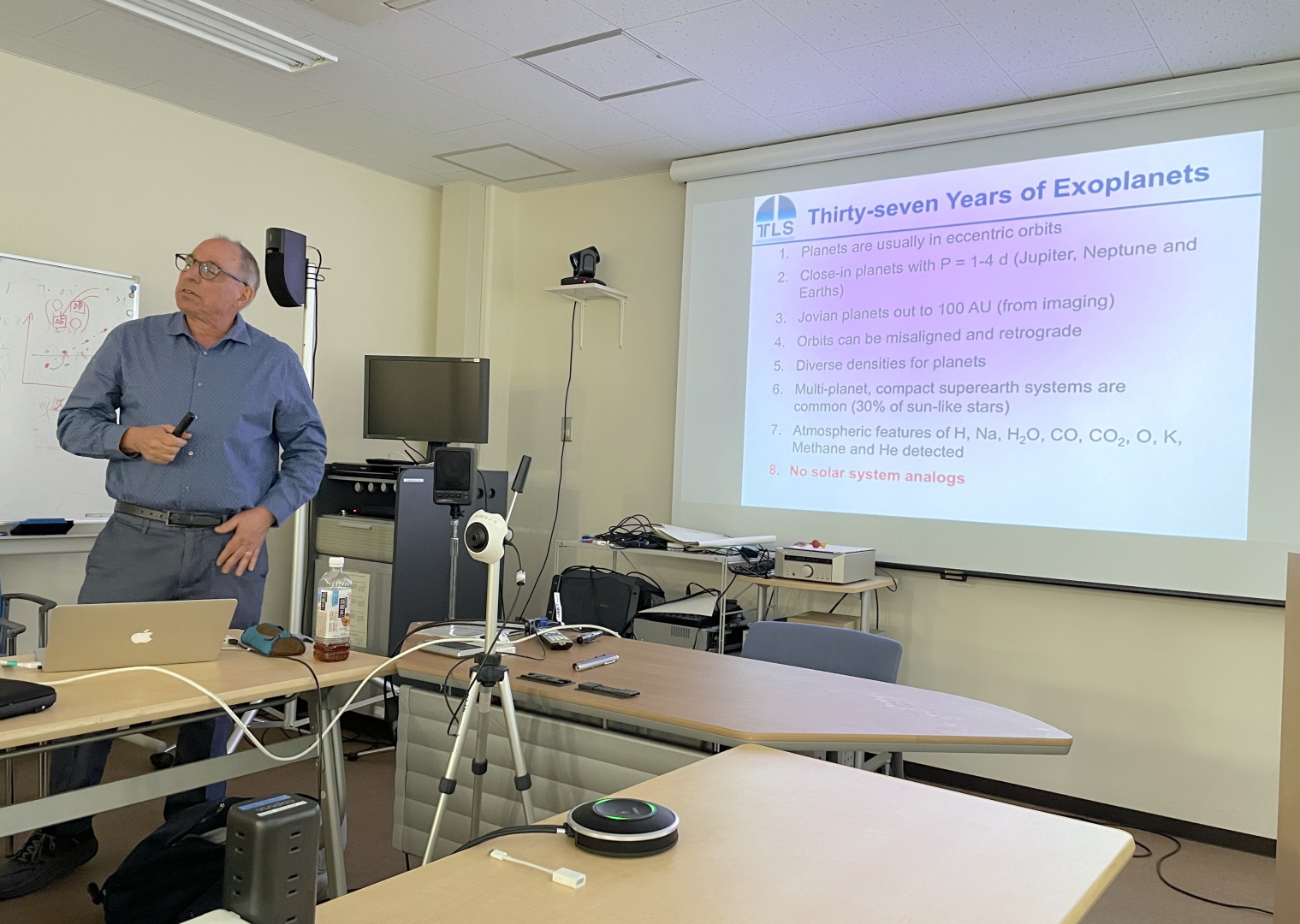The “Encyclopaedia of Exoplanetary Systems” currently lists 7.441 extrasolar planets (as of March 2025). With so many known extrasolar planets or planetary systems, astronomers try to find patterns why certain stars have planetary companions and how to characterize and group those planets.
To help answer those questions, Artie Hatzes, former director of the Thuringian State Observatory, will start a new research project. He will review all the planets found by the KESPRINT consortium. The KESPRINT consortium is devoted to detecting and characterizing extrasolar planets found by space-based telescopes like “Kepler” or “TESS” (Transiting Exoplanet Survey Satellite).
Homogeneous database
Reviewing the over 100 extrasolar planets found by KESPRINT has one big advantage: The consortium knows how their observational data was analyzed and that the data was reduced in the same way. Furthermore, the KESPRINT sample has some of the most precise measurements for the masses of small planets. That makes the KESPRINT sample special. “It provides a great base for this review project”, says Artie Hatzes.
The idea for this review project was born during a staff exchange under the EXOWORLD project funded by the European Union. Hatzes visited fellow KESPRINT members at the NINS (National Institutes of Natural Sciences) Astrobiology Center, located at the National Astronomical Observatory of Japan (NAOJ) in Tokyo.
Meeting KESPRINT colleagues for the first time
 Teruyuki Hirano (Associate Professor at NINS Astrobiology Center), Artie Hatzes (Thuringian State Observatory), John Livingston (Assistant Professor at NINS Astrobiology Center) and Norio Narita (professor at the University of Tokyo) are members of the international KESPRINT consortium. Photo: Thuringian State ObservatoryNorio Narita (professor at the University of Tokyo), Teruyuki Hirano (Associate Professor at NINS Astrobiology Center), and John Livingston (Assistant Professor at NINS Astrobiology Center) are also members of the international KESPRINT consortium. Even though Artie Hatzes has worked since many years with Teruyuki Hirano, John Livingston and Norio Narita, they so far had only met via online meetings or briefly at conferences. Thanks to the EXOWORLD project, Hatzes was able to visit his KESPRINT colleagues at NINS Astrobiology Center for the first time.
Teruyuki Hirano (Associate Professor at NINS Astrobiology Center), Artie Hatzes (Thuringian State Observatory), John Livingston (Assistant Professor at NINS Astrobiology Center) and Norio Narita (professor at the University of Tokyo) are members of the international KESPRINT consortium. Photo: Thuringian State ObservatoryNorio Narita (professor at the University of Tokyo), Teruyuki Hirano (Associate Professor at NINS Astrobiology Center), and John Livingston (Assistant Professor at NINS Astrobiology Center) are also members of the international KESPRINT consortium. Even though Artie Hatzes has worked since many years with Teruyuki Hirano, John Livingston and Norio Narita, they so far had only met via online meetings or briefly at conferences. Thanks to the EXOWORLD project, Hatzes was able to visit his KESPRINT colleagues at NINS Astrobiology Center for the first time.
They discussed ideas on how to better explore the properties of small planets found by the KESPRINT consortium. Hatzes and Hirano also have a shared interest in using high precision radial velocity measurements in the infrared for detecting and characterizing extrasolar planets.
Introducing CRIRES+ and VIPER
The staff exchange program enabled students and post-docs at the NINS Astrobiology Center to learn more about the CRyogenic high-resolution InfraRed Echelle Spectrograph “CRIRES+”. Hatzes was the Consortium Principal Investigator for CRIRES+ , an instrument built by ESO in collaboration with a consortium of European institutes. Hatzes presented the capabilities of the instrument, its performance and what it can do for characterizing extrasolar planets.
He also introduced the VIPER software, a program for a radial velocity reduction pipeline, that is used for reducing observation data taken with CRIRES+. VIPER is developed and improved at the Thuringian State Observatory, and available to the research community as open-source program.
 In his talk, Artie Hatzes looked back on an active career in exoplanet research for the past 37 years. Photo: Thuringian State ObservatoryHatzes is one of the few astronomers who has detected and studied extrasolar planets almost from the very onset of this exciting research area. His talk at the NINS Astrobiology Center on how the field of exoplanet research developed over the past almost 40 years, surprises along the way, and lessons learned, was well received.
In his talk, Artie Hatzes looked back on an active career in exoplanet research for the past 37 years. Photo: Thuringian State ObservatoryHatzes is one of the few astronomers who has detected and studied extrasolar planets almost from the very onset of this exciting research area. His talk at the NINS Astrobiology Center on how the field of exoplanet research developed over the past almost 40 years, surprises along the way, and lessons learned, was well received.
Background Information
The KESPRINT consortium is devoted to detecting and characterizing extrasolar planets found by space-based telescopes like “Kepler” or “TESS” (Transiting Exoplanet Survey Satellite). KESPRINT provides mass measurements that yield the planet density needed to determine the type of planet (gas giant or rocky.) KESPRINT is one of the most successful teams world-wide for the measurement of masses of transiting exoplanets found by the TESS mission. The KESPRINT consortium consists of 47 members in 9 countries (Germany, Austria, Italy, Spain, Sweden, Denmark, The Netherlands, Japan, and USA). The Thuringian State Observatory is a founding member of KESPRINT.
Hatzes’ research stay was made possible by European Union research funding. The Thuringian State Observatory is part of the EXOWORLD consortium who had successfully applied for Staff Exchanges as part of Marie Skłodowska-Curie Actions (Project ID: 101086149). “Understanding the evolution of EXOplanets and towards habitable WORLDs (EXOWORLD)” is a consortium that comprises 12 organizations from eight countries. It leverages interdisciplinary and international expertise to study the diversity of exoplanets.

